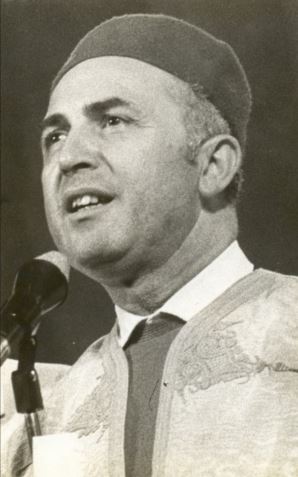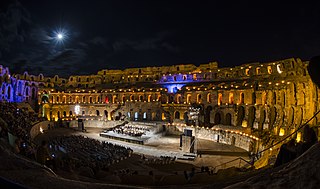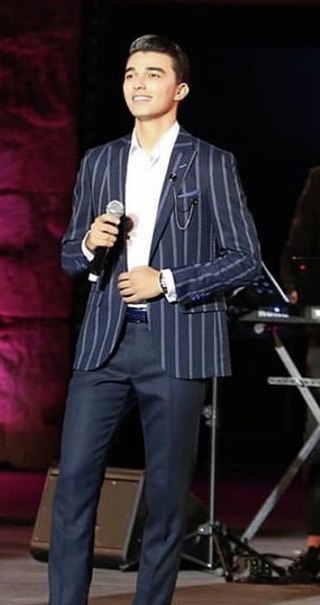Articles related to Algeria include:
Tunisia is a North African country with a predominantly Arabic-speaking population. The country is best known for malouf, a kind of music imported from Andalusia after the Moors expulsion in the 15th century. Though in its modern form, malouf is likely very dissimilar to any music played more than four centuries ago, it does have its roots in Spain and Portugal, and is closely related to genres with a similar history throughout North Africa, including malouf's Libyan cousin, Algerian gharnati and Moroccan ala or Andalusi. During the Ottoman era, malouf was influenced by Turkish music. However, Tunisian repertoires, styles and also instruments remain distinctive – the ʻūd tūnsī is an emblematic case. This is a close relative of the 'uds associated with Algeria and also Morocco.

Tunisian independence was a process that occurred from 1952 to 1956 between France and an independence movement, led by Habib Bourguiba. He became the first Prime Minister of the Kingdom of Tunisia after negotiations with France successfully brought an end to the colonial protectorate and led to independence.
Ali Sriti was a Tunisian oudist, composer, and music teacher.

Salim Dada is an Algerian composer, musician, and musicologist.

Aït Yahia is a commune in the Tizi Ouzou wilaya in northern Algeria, located 47 km to the southeast of Tizi Ouzou, 33 km to the south of Azazga, and 4 km northeast of Aïn El Hammam. The administrative center of the commune is the village of Ait Hichem [fr].

Abdelmajid Lakhal was a Tunisian theatre and film actor and theatre director. He was considered to be a professional and versatile interpreter. Recently, he performed classical pieces translated into Arabic, at the Municipal theatre of Tunis, which were well received. He was known on Arab Television for acting in many telefilms.
The Turks in Tunisia, also known as Turco-Tunisians and Tunisian Turks, are ethnic Turks who constitute one of the minority groups in Tunisia.
Ahmed Achour was a Tunisian conductor.

Salah El Mahdi was a Tunisian musicologist, conductor, composer, flautist, music critic and judge.

The Festival international de musique symphonique d'El Jem is a symphonic music festival held every summer in the Tunisian town of El Jem since 1985. It is held in the El Jem amphitheater, built in the third century, with a capacity between 27,000 and 30,000 spectators. Since its inception, the festival has attracted many orchestras who come to give performances, including the Algerian National Symphony Orchestra, the Rome Philharmonic Orchestra, the Tunisian Symphony Orchestra, the Budapest Gypsy Symphony Orchestra for the first time in Africa and the Orchestra Sinfonica di Roma led by Francesco La Vecchia.
Music in Tunisian Arabic has appeared in the 17th century. It has developed a lot since the 19th century and has spread all over Tunisia mainly after the creation of Radio Tunis and Établissement de la radiodiffusion-télévision tunisienne. Nowadays, Tunisian Arabic has become the main language of songs in Tunisia including Tunisian music, Underground music and Opera.

The Amphitheatre of El Jem is an oval amphitheatre in the modern-day city of El Djem, Tunisia, formerly Thysdrus in the Roman province of Africa. It is listed by UNESCO since 1979 as a World Heritage Site.
Events in the year 2020 in Tunisia.
The Ministry of the Pen was a ministerial position in Tunisia between 1860 and the end of the monarchical regime in 1957.

Ahmed Rebai, by his full name Ahmed Ben Wajdi Rebai, born on October 27, 1997, in Tunis, is a Tunisian singer.

Bacem Anas Romdhani is a Tunisian-British award-winning concert violinist. He was the winner of the World Philharmonic Orchestra in Paris (2006), where he was scouted to represent Tunisia, Africa & the Arab World, 1st prize winner at the Vatelot-Rampal International violin competition in Paris (2007) and 3rd prize winner at the Vienna New Year’s Concert International music competition in Vienna (2021). He performs on the “Menuhin” 1998 violin made by Andreas Hellinge in Geneva, Switzerland.
Algiers is a 2024 mystery thriller film written, scored, co-edited and directed by Chakib Taleb-Bendiab in his directorial debut. An international co-production between Algeria, Tunisia, France and Canada, the film stars Meriem Medjkane, Nabil Asli and Hichem Mesbah. It won the Grand Prix Award at the 28th Rhode Island International Film Festival.








